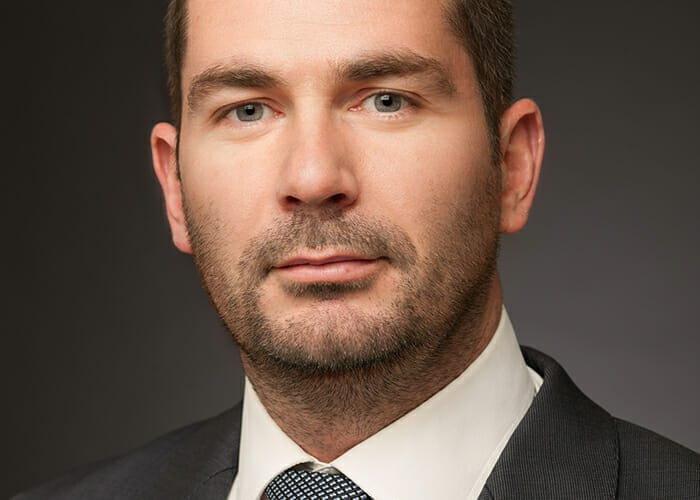Barry Kenneth joined the UK’s Pension Protection Fund, PPF, as chief investment officer three years ago from Morgan Stanley, where he headed up the bank’s fixed income and pension coverage. It was a role which involved navigating new banking regulation introduced in the wake of the financial crisis, in an experience that leaves the PPF in competent hands today.
The £22.6 billion ($33 billion) lifeboat fund is positioning itself ahead of costly regulation coming pension funds’ way, around the use of derivatives on which the PPF relies upon in its liability driven investment (LDI) strategy.
European pension funds have been exempt from the mandatory central clearing of derivatives until 2017. Next year new rules to bolster markets against systemic risk, mean over-the-counter derivatives will be processed through centralised clearing houses, requiring banks to hold increased capital against these instruments, reducing their availability and increasing costs.
“We are assessing potentially changing our portfolio in advance of central clearing obligations,” says Kenneth.
The PPF takes on defined benefit schemes left stranded if their corporate sponsor collapses. Funded by a levy on eligible schemes, its strategy is one of caution and focus, balanced between generating enough of a return to pay its 200,000 members, yet not place too big a risk on its levy payers.
Kenneth’s plan for reducing the reliance on inflation and interest rate swaps, and better proof the portfolio from the looming cost of derivative strategies, is a hybrid portfolio that will ultimately account for 12.5 per cent of the fund’s assets and “does two jobs.” Hybrid assets will have the hedging and inflation-proof characteristics of the LDI portfolio but also income-generating qualities.
So far investments include renewable energy, index-linked private placements and rental properties. Kenneth’s “proactive” approach to finding assets favours co-investment, allowing the PPF to bid on bigger projects where the competition is less fierce. A flagship deal in 2014 saw the PPF team up with M&G Real Estate to buy Manchester office blocks valued at £300 million-plus ($439 million) bringing both stable cash flows and an interest rate hedge.
The PPF previously targeted a 70 per cent allocation to cash and bonds to match liabilities, with the remainder in risk assets aiming for a LIBOR-plus 1.8 per cent outperformance target. By 2017 the fund will have a strategic 58 per cent allocation to cash and bonds, comprising UK gilts and annuity contracts, global government bonds and global aggregate bonds; including emerging market debt, a 22.5 per cent allocation to alternatives comprising private equity, infrastructure, timber and absolute return strategies, a 7 per cent allocation to public equity, with the remainder in the hybrid portfolio.
The fund’s small 7 per cent equity allocation is designed to counter the large equity allocations held by many of the schemes, some significantly underfunded, that it protects.
The flexible risk budget ranges from 3.5 to 5 per cent but with the current “headwinds” in the global economy Kenneth’s risk appetite currently hovers around the bottom end of the range. “We are looking for pockets that will deliver value in a challenging environment. We have been allocating more of the portfolio to idiosyncratic risk that is not aligned to the broader market.”
Internal and external ‘added value’
The fund is continuing to move more management in-house. The liability side of the balance sheet, namely derivatives and government bonds, will be the first portfolio to be brought in-house.
“If anybody knows what our liabilities look like and how to hedge them, we should,” he says.
Other assets will be brought in-house gradually over time, although this will never amount to the entire portfolio – only the parts of it where he sees real value.
“We are not being driven by a time scale and we are not going to build up massive teams,” he says.
Kenneth believes that both external managers and his 14-strong internal team can add alpha through their decisions.
The external managers add value against their benchmark and the internal team add value through manager selection and benchmarking.
“In portfolio construction we think about our true investment benchmark – our liabilities – not the asset based indices. Since we hedge our liabilities, this is equivalent to looking at the total return. The manager may deliver alpha, but if the index falls by more than the alpha, that is not going to add value to the fund.
“We also think in risk factors, and we have given out risk factor mandates especially in our hybrid portfolio, where we are focussed on obtaining credit, duration, inflation and illiquidity characteristics in physical assets, as opposed to constraining the managers based on asset class name,” Kenneth says.
The PPF has evolved and thrived from small beginnings in 2005. In its latest phase, it is acquiring assets that provide long-term cash flows and have less reliance on financial instruments, showing its continued ability to adapt to changing market conditions and financial regulation.



